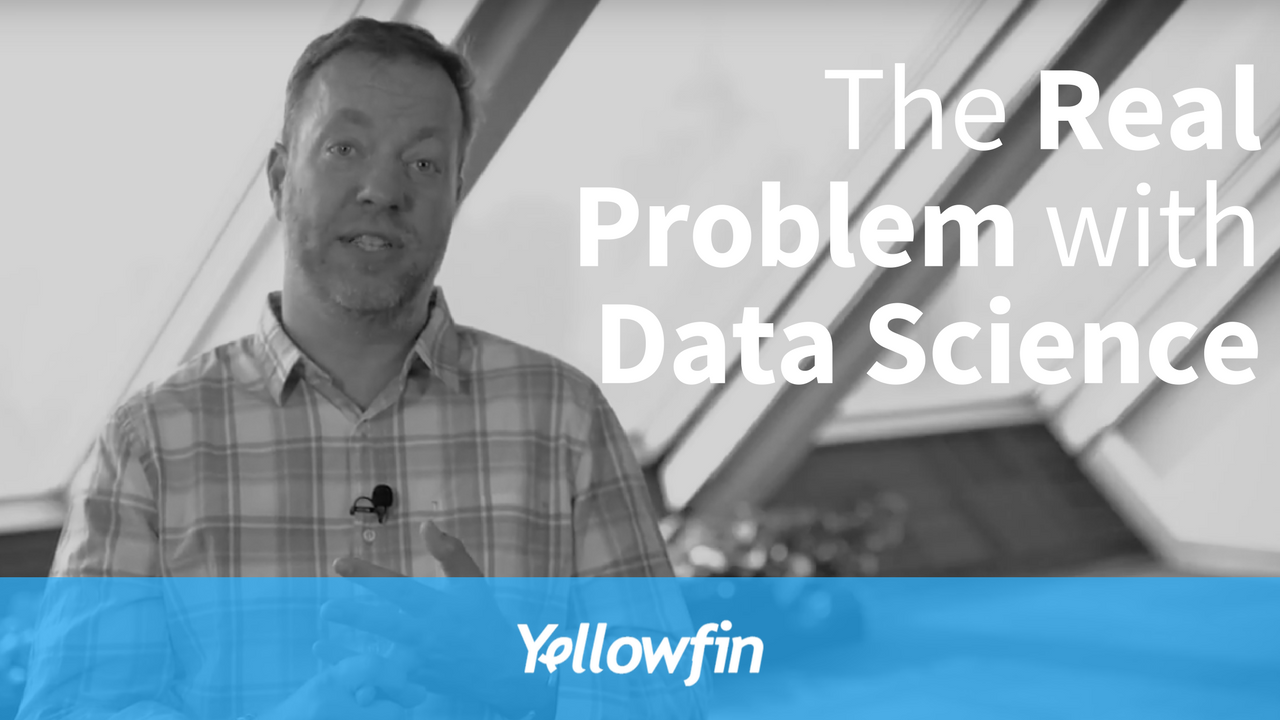Data is my thing – it’s Yellowfin’s thing. But there is a big fat problem with data science today, and that is that it rarely drives real change. There’s data everywhere and clever people are doing clever things with it, but too often it’s not filtering through the organization to drive real change in the way business happens.
Data science without a commercial purpose
Bad data science is data science that has no commercial value.
The data scientist operates as a cottage industry, beavering away on projects, but they’re not connected to commercials of the organization. They tinker with the tools, but don’t have a deep commercial purpose for what they are doing.
You must link the data science into the way the business delivers value. Leadership must take responsibility for ensuring that data science is directed at solving meaningful problems.
Data science that never gets operationalized
Wasted data science is really great insights discovered that end up in a PowerPoint that goes nowhere.
You may have found a way to sell more widgets, save money on operations, or stop the best people from leaving the company, but that means nothing if nobody else knows about it.
I get that running a model in R and getting an outcome is exciting for a data scientist, but if the business doesn’t act on it, it’s been meaningless and purposeless.
You have to communicate it to the business, and make people change their behaviors to take advantage of these new insights. This means more than putting the information into a PowerPoint presentation. It may look great and everyone in the meeting will nod and say “we should do something with that.” But far too often then everyone goes back to their jobs. Regardless of how good the insight is, it’s bad data science if it never makes it beyond PowerPoint.
Great data science must change the way you do business
Great data science is where action gets taken that changes the way the business thinks about its customers, its processes or its people. It makes a fundamental difference to that business.
This requires collaboration between the scientists delivering insights and the business leaders on the ground. The ideal case is when the results can be embedded in the processes of the business so that they drive automated decision-making.
For example in a life insurance company, data science might identify an algorithm that can automate some of the application process. In that case the company should make the changes necessary to embed the process and provide a better customer experience.
When the outcome requires human interaction, you need to entrench it into an analytic framework. You have to be able to deliver that outcome to the businesses in a way that they can use and consume. Perhaps you have a model that predicts which customers are likely to churn. In this case you would want to deliver that outcome via a dashboard to the sales team in a very actionable way: here is the list of those likely to go; make them your priority now.
A US partner of Yellowfin, Quantifi, does this brilliantly in the health space. They do predictive work around patient outcomes that are fed in as a Yellowfin report that is easy to understand for the data consumers, but also something they can keep going back to as it changes and updates over time. It’s not just a static piece of content: it is a living and breathing beast.
The key is feeding curated content to the people who can do something with it in a way that will help them take the action needed. If they have to go through five different tools to find out what’s going on and what they should be doing, human nature says they just won’t do it.
An analytic app is something that business users can go back to understand the organization from a data perspective. The outcome of data science and analytic projects should be fed through your analytic apps. They are the portal into the data of the business.
Consistency is key
It’s easy for people to want to cure all the ills of this organization through one data science project. Not gonna happen. Don’t sweat too hard on this stuff, just do it, and if you improve your customer experience by a small amount then you have done a great thing.
The ideal outcome is to make small but frequent changes to your business based on data. Because ultimately, data science is only as good as the change it delivers.

